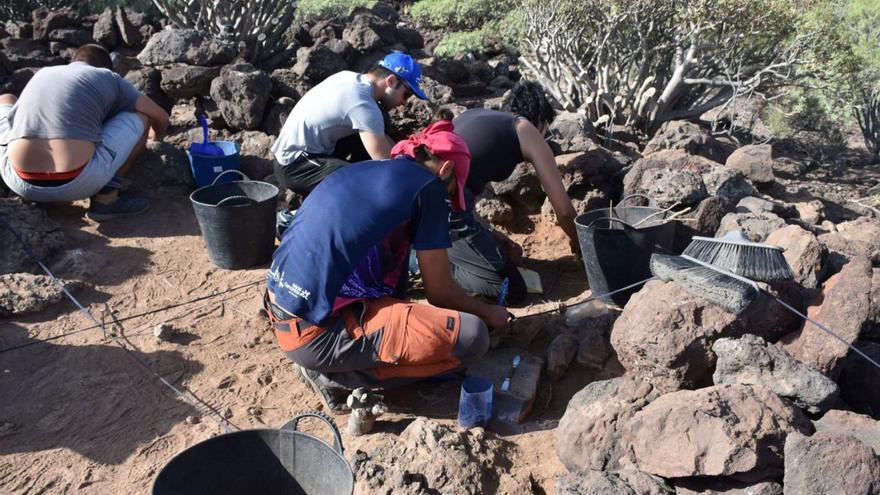
The General Directorate of Cultural Heritage, through the Canarian Institute for Cultural Development (ICDC), prepared a study that confirms the existence of a Guanche production area of rotary mills outside the area of Las Cañadas del Teide, in the Ifara area, in Granadilla de Abona. The investigation, carried out by the Prored cooperative, located, documented and analyzed a quarry-workshop that confirms the existence of a production area for Guanche circular mills in the South.
Specific, The archaeological surveys and interventions carried out in the years 2004, 2008 and 2018, as well as the recent documentation work in the field, date the presence of 13 abandoned grinding elements in different phases of elaboration.structures associated with this activity, workshops in a very poor state of conservation, due to the alterations that this territory has had, and compact rock instruments, of a large format, related to the work of hand mills.
The ones known as spikes
The existence of these instruments, classified as peaks given their morphology, “clearly indicate that this area would not only be associated with the collection of resources, but also with the work of vesicular or porous rocks and, therefore, we would be facing a quarry-workshop area. , very similar to those described for Cañadas del Teide in the context of the projects directed by Dr. Matilde Arnay de la Rosa, from the University of La Laguna».
The General Director of Cultural Heritage of the Government of the Canary IslandsNona Perera, points out that “the works carried out in this new and unique quarry-workshop documented outside the high mountains of Tenerife and the archaeological excavation of one of the housing structures in this important area of the South, will allow us to better analyze the Guanche settlements, the pattern of occupation and mobility in the territory”. He maintains that this type of study facilitates “a better understanding of the social and economic changes that occurred in the Guanche society before the conquest of Tenerife.”
The General Directorate of Cultural Heritage highlights that the existence of mill quarries is an indication that “the Guanche agricultural activity could have been more important and widespread in the island territory than what has been admitted to date.” The archaeological area is made up of a set of structures and raw material supply areas with remains that represent various phases of the operational chain linked to the production of grinding pieces in vacuolar rock. The first phase of the archaeological excavation has also been carried out on a surface structure or Guanche hut habitat.
In what refers to the south of Tenerife in general, there are meager interventions in this type of sites, to which we must add that, except in specific cases, excavations have not been carried out with a renewed archaeological methodology in this type of construction, according to the department of the regional Executive. This lack of data makes it difficult to carry out in-depth comparative analyzes and understand, in a comprehensive way, the Guanche settlement pattern in the South, which goes beyond the cave habitat.
Cultural Heritage also reports that one of the significant aspects of the work was to obtain greater knowledge about the typology and functionality of the lithic objects located on the surface. In this regard, it indicates that tools associated with quarry-workshops have been found, such as picks, and tools associated with residential contexts, assigned to daily/domestic activities, from the excavation of a structure or cabin near the quarry. .
High human occupation
From the study it can be deduced that “this first contact with the lithic record (of the stone) of this area of Tenerife seems to indicate that there was a high human occupation in this area, something that seems to corroborate some sites recorded in the environment, such as caves, cabins or cave manifestations».















